The Spiritual Significance of Red Suns in Native Culture
Have you ever looked up at a blood-red sun and felt a chill run down your spine? For countless Native American tribes, this wasn’t just an atmospheric phenomenon—it was a direct message from the spiritual realm.
What if I told you that the red sun spiritual meaning in Native culture goes deeper than most people realize? The crimson orb hanging in the sky wasn’t feared—it was revered as a powerful omen connecting humans to ancestral wisdom.
Tribes from the Navajo to the Cherokee interpreted these celestial events differently, but all recognized their profound significance. Some saw renewal, others warning.
But here’s what modern spiritualists often get wrong about Native interpretations of red suns…
Understanding Red Suns in Native Traditions
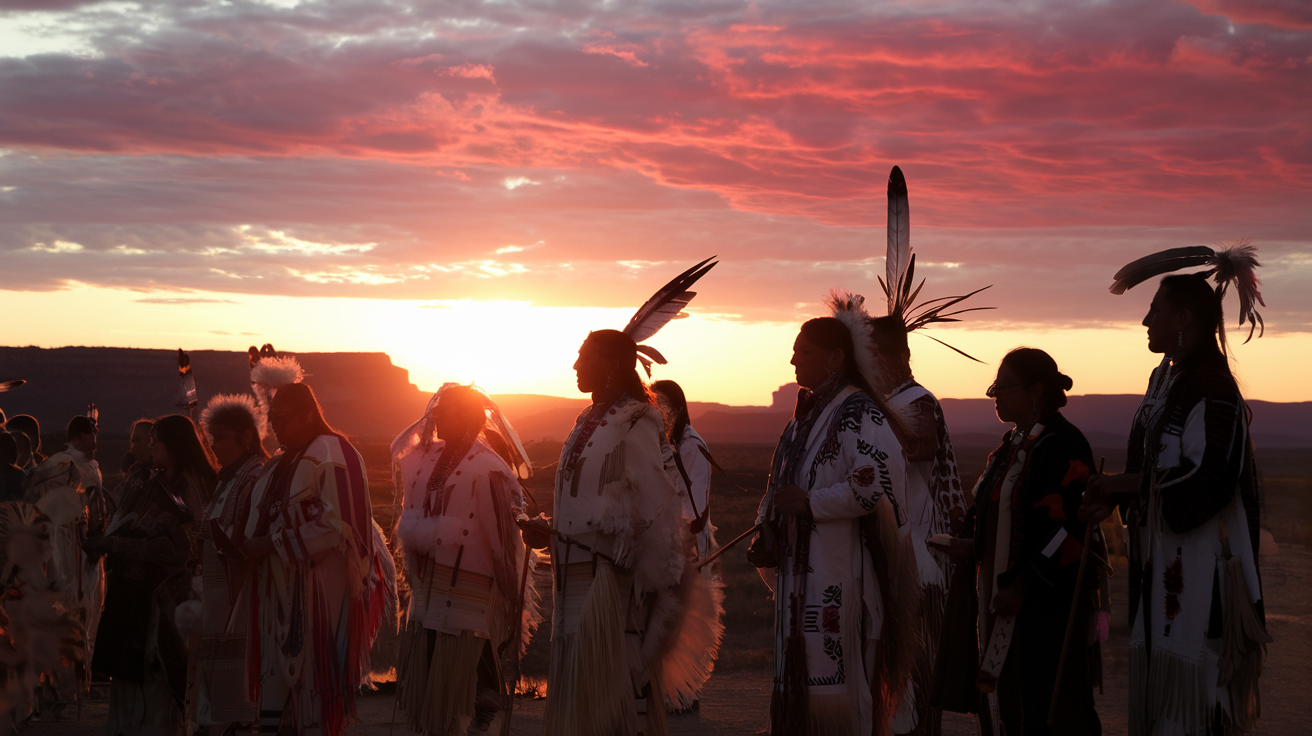
Celestial Significance Across Tribal Nations
When the sun glows crimson in the sky, many tribal nations see more than just atmospheric conditions at work. For the Navajo, a red sun signifies the powerful presence of Father Sun speaking directly to the people. The Lakota view it as a time when the veil between worlds thins, allowing ancestral wisdom to flow more freely.
Tribes across the Southwest interpret red suns differently than those in the Pacific Northwest or Great Plains. The Hopi see red solar events as indicators of coming changes in weather patterns that would affect planting cycles. Meanwhile, Eastern Woodland tribes often associate the phenomenon with transformation and renewal.
Red Sun as Divine Messenger
The red sun doesn’t just exist—it speaks. Many tribal elders describe it as the Creator’s way of commanding attention when important messages need delivery.
“When the sun wears red, listen carefully,” goes a common saying among certain tribes. These messages might warn of environmental changes, signal the need for specific ceremonies, or mark significant transitions in tribal life.
During vision quests, a red sun appearance often signifies that the seeker has received special attention from the spirit world. Many medicine people recount how red sun days correlate with powerful healing revelations or the transfer of sacred knowledge.
Historical Accounts of Red Sun Events
Oral histories are filled with descriptions of notable red sun occurrences that aligned with pivotal moments. The Kiowa recall a brilliant red sun that hung in the sky for three days before a decisive battle in the late 1700s. The Cherokee have stories of red suns appearing during their forced relocation on the Trail of Tears.
These weren’t just atmospheric oddities caused by wildfires or dust storms. They were cosmic punctuation marks highlighting moments of profound change.
Tribal winter counts—pictographic calendars recording significant events—frequently feature red sun symbols marking years of great importance. Anthropologists studying these records note how often they correlate with major tribal movements, treaties, or natural disasters.
Symbolic Interpretation in Creation Stories
Dig into creation stories and you’ll find the red sun appearing at pivotal moments of world-formation. The Pomo tell of how Coyote tricked the sun into turning red to create the first sunset. For the Salish peoples, the red sun represents the blood of ancient sky beings whose sacrifice made human life possible.
These stories aren’t just entertaining myths—they’re sophisticated frameworks for understanding cosmic relationships. The red sun often symbolizes transformation, sacrifice, and the delicate balance between opposing forces in the universe.
Some tribal nations associate red suns with the transitional moments in human development. Just as the day must pass through the redness of sunset before entering night, humans must navigate significant transitions marked by challenge and beauty.
Red Suns in Prophecy and Prediction
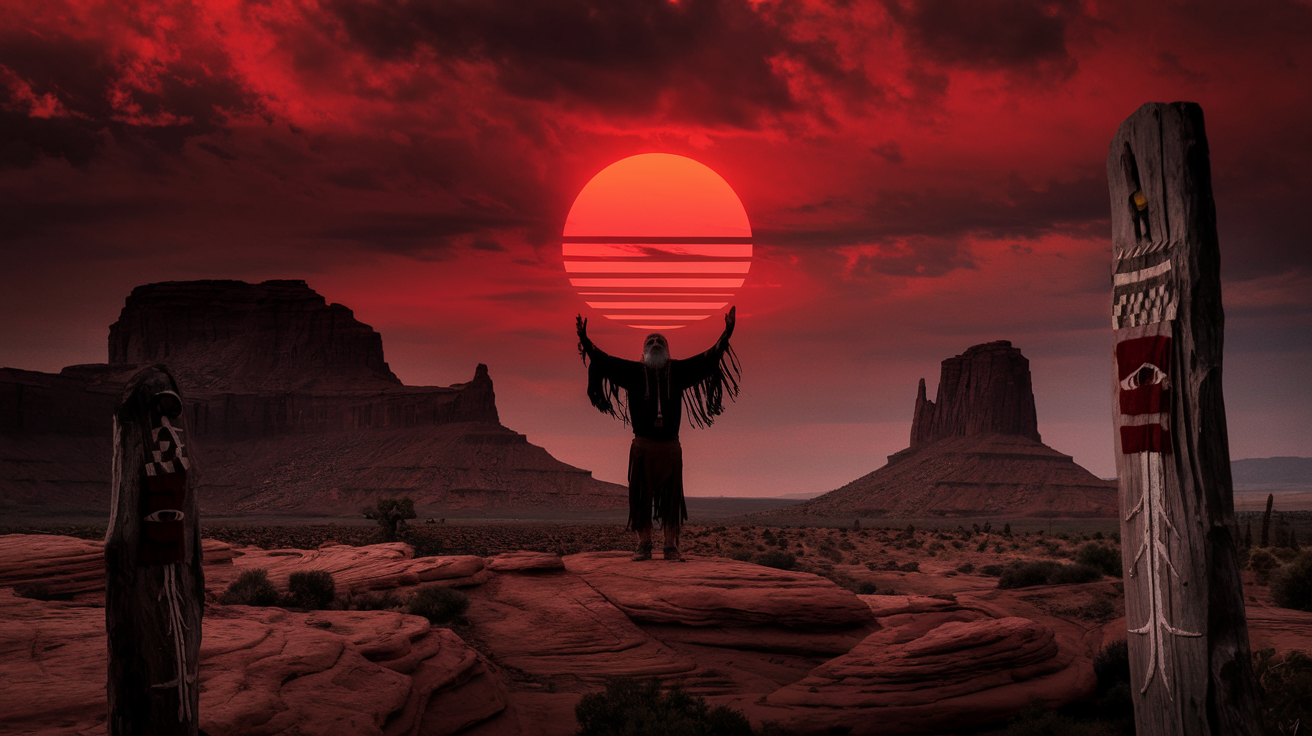
Warning Signs and Omens
The red sun holds powerful prophetic significance in many Native cultures. When the sun appears blood-red in the sky, it’s rarely seen as just a weather phenomenon—it’s a message from the spiritual realm.
Many tribes interpret the crimson sun as a warning of coming challenges. The Hopi, for instance, view red suns as signals of impending conflict or hardship requiring community preparation. These celestial warnings aren’t taken lightly—they trigger specific prayers and ceremonies to protect the tribe.
What’s fascinating is how consistent these interpretations remain across different regions. From the Plains tribes to coastal communities, a red sun often signifies a time to pause and reflect on community actions. It’s like the spirits are saying, “Pay attention now.”
Connection to Seasonal Changes
Red suns don’t just foretell trouble—they mark important seasonal transitions. Many tribes track these appearances as cosmic calendars, signaling the shift between seasons.
In Southwestern traditions, a red morning sun during specific moon phases indicates the coming winter will be particularly harsh. Tribal elders watch for these signs to adjust hunting and gathering plans accordingly.
The Dakota people connect red sunset phenomena with wind pattern changes, often predicting storm systems days before they arrive. This knowledge wasn’t just spiritual—it was practical survival information passed through generations.
Relationship to Agricultural Cycles
The farming tribes developed especially nuanced relationships with red sun prophecies. The appearance of blood-red suns during planting seasons often guided agricultural decisions.
The Pueblo peoples traditionally watch for red sun events in early spring as indicators of rainfall patterns. A crimson sunrise following the spring equinox might signal delayed rains, prompting farmers to adjust planting schedules.
Some Eastern Woodland tribes associate red suns with soil fertility cycles. When the sun glows red through summer haze, it’s seen as a message about which fields need rest versus which will produce abundantly.
Spiritual Practices Associated with Red Suns
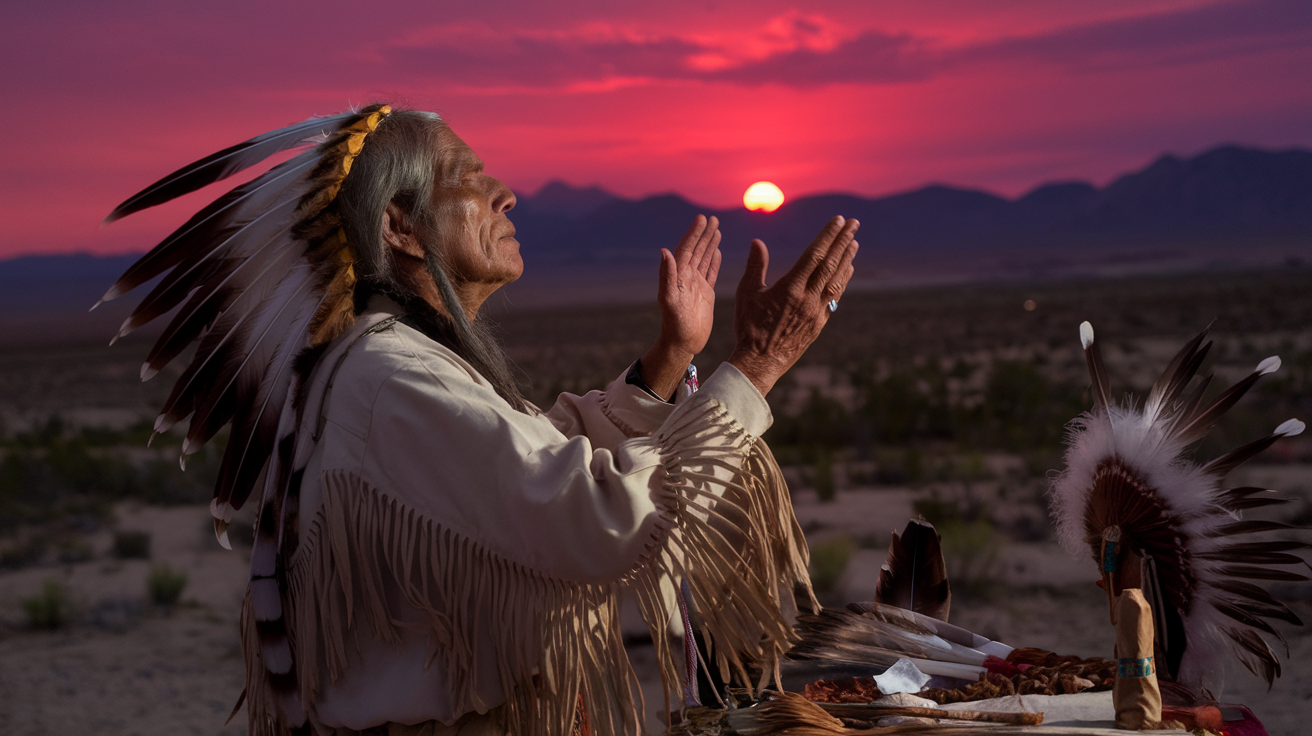
A. Ceremonial Responses to Red Sun Appearances
When a red sun appears in the sky, many Native communities view it as a powerful sign requiring immediate spiritual attention. Tribal elders often call for specific ceremonies that have been passed down through generations. These aren’t casual gatherings—they’re sacred responses to what’s considered a cosmic message.
In many Plains tribes, the appearance of a crimson sun triggers drum circles that can last from sunrise to sunset. The rhythmic beating creates vibrations believed to harmonize with the altered solar energy. Meanwhile, Southwestern Pueblo communities might perform special dances with movements that mirror the sun’s perceived struggle through the reddened sky.
B. Prayer Rituals and Offerings
The red sun demands unique prayers. Many tribal members burn specific herbs like white sage, sweetgrass, or cedar during these times—the smoke carrying intentions skyward.
Food offerings take on special significance too. I’ve witnessed elders carefully place corn pollen, tobacco, and sacred foods at outdoor altars facing the direction of the red sun. These aren’t random acts—they’re precise spiritual technologies designed to maintain balance when the sun appears transformed.
Some communities fast during red sun events, believing the physical sacrifice strengthens their spiritual connection and prayers during this potent time.
C. Communal Gatherings and Their Purpose
Red suns bring people together. In many tribes, everyone—from toddlers to elders—gathers when the sun takes on this fiery appearance. These aren’t just social meetings but spiritual reinforcements.
Storytellers share oral histories about previous red sun events and what followed—both cautions and blessings. Knowledge keepers interpret the timing, duration, and intensity of the red sun. The community processes this information collectively, finding strength in shared understanding.
Some gatherings involve creation of temporary structures oriented toward the red sun. Inside these spaces, communities engage in shared prayer, creating a concentrated spiritual field believed to help restore cosmic balance.
D. Healing Traditions Linked to Red Sun Energy
The red sun’s rare energy is considered exceptionally powerful for healing work. Traditional healers often collect rainwater, plants, or prepare medicines during these periods, believing they become infused with transformative properties.
Many healing ceremonies specifically saved for red sun occurrences focus on community-wide cleansing. These might involve smoke baths, special teas, or ritual bathing in specific water sources while the sun burns crimson.
Some healing traditions see the red sun as revealing spiritual illnesses otherwise hidden, making diagnosis and treatment possible during this window when the veil between worlds thins.
E. Personal Spiritual Growth During Red Sun Phenomena
Beyond community practices, the red sun calls for personal spiritual work. Vision quests timed with red sun events are considered especially powerful—the unusual light believed to illuminate inner truths normally hidden.
Many indigenous teachers encourage specific meditations during these periods. Sitting with one’s shadow fully exposed under the red light represents a unique opportunity for spiritual growth.
Dreams during red sun periods receive special attention too. Dream journals fill with vivid imagery that medicine people help interpret as messages from ancestors or the spirit world—guidance particularly accessible when the sun wears its red face.
Red Sun Symbolism in Native Art and Storytelling
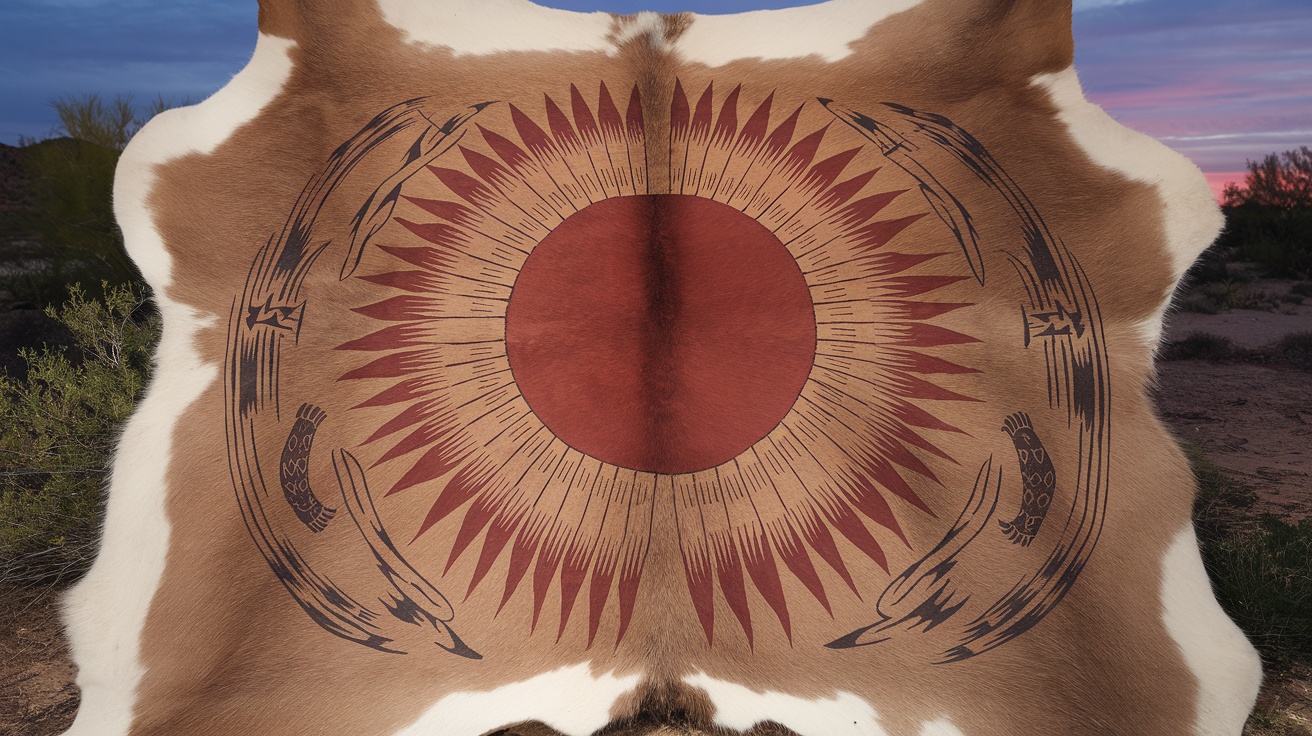
Depictions in Ancient Rock Art
Red suns appear across countless Native rock art sites, dating back thousands of years. The Anasazi of the Southwest carved striking circular petroglyphs with radiating lines – unmistakable sun symbols often colored with red ochre. These weren’t just decorative. They marked solstices, equinoxes, and cosmic events that determined planting cycles and ceremonies.
In the Plains regions, red sun symbols often appeared alongside bison and human figures, connecting celestial power to earthly abundance. When archaeologists studied these sites, they discovered many were positioned to capture specific light patterns during red sun events like eclipses or smoke-filtered sunlight from seasonal fires.
What’s fascinating is how consistent these red sun depictions remain across vastly different geographic regions. From California to the Eastern Woodlands, the sacred power of the red sun transcended tribal boundaries.
Red Sun Motifs in Tribal Crafts
The red sun didn’t just belong on stone. It lived in everyday objects too.
Navajo weavers incorporated bold red sun symbols into blankets and rugs, creating protective items that carried solar energy into homes. Pueblo pottery featured intricate red sun designs, often positioned to tell specific stories or mark ceremonial purposes.
Eastern tribes like the Cherokee embedded red sun motifs into beadwork, creating stunning patterns that adorned clothing and ceremonial items. These weren’t random decorative choices – each placement followed traditional protocols about when and how sacred symbols could be used.
What’s remarkable is how these crafts evolved while maintaining their spiritual foundations. Modern Native artists still incorporate red sun imagery, though now they might blend traditional techniques with contemporary materials.
Oral Traditions Preserving Red Sun Knowledge
The deepest understanding of red sun symbolism comes through stories passed down for generations.
Many tribes share prophecies about times when the sun would turn red, signaling major transitions or spiritual awakenings. The Hopi speak of specific red sun periods marking the end of one world-cycle and beginning of another. These weren’t doomsday predictions but reminders of natural cosmic rhythms.
Healing songs referencing the red sun appear in ceremonial traditions across diverse tribes. Medicine people would invoke the purifying power of the red sun to cleanse illness or restore balance.
These oral traditions provided practical guidance too. When forest fires or dust storms turned the sun red, elders could reference ancestral stories to explain proper responses and behaviors during these unusual phenomena.
What makes these traditions so valuable is their resilience. Despite centuries of suppression, these stories continued through whispered teachings, ensuring this sacred knowledge survived.
Modern Indigenous Perspectives on Red Suns
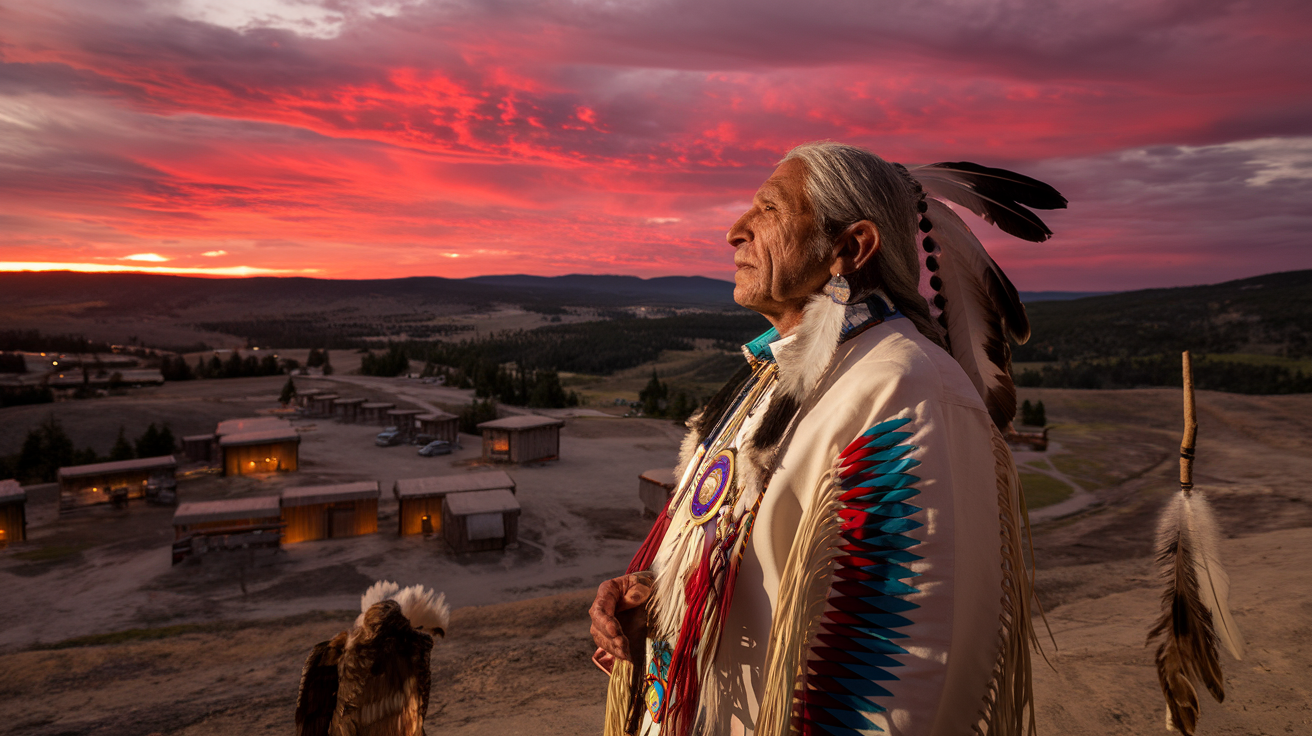
Contemporary Spiritual Leaders’ Interpretations
Many tribal elders today view red suns through both ancestral and modern lenses. When wildfires or dust storms turn the sun crimson, spiritual leaders like Richard Two Hawks of the Lakota Nation see these events as reminders rather than omens.
“The red sun speaks to us just as it spoke to our ancestors,” Two Hawks explains. “But now it’s also telling us something about what we’ve done to Mother Earth.”
Some contemporary medicine people incorporate red sun appearances into healing ceremonies, believing these rare celestial events amplify spiritual energy. During the 2017 solar eclipse when the sun appeared red at certain phases, Indigenous communities across North America held special gatherings, combining traditional prayers with new interpretations relevant to current tribal challenges.
Balancing Traditional Beliefs with Scientific Understanding
The beauty of modern Indigenous perspectives? They don’t see science and spirituality as enemies.
When Navajo astronomers like Nancy Maryboy discuss red sun phenomena, they weave together scientific explanations about atmospheric particles with traditional knowledge. This isn’t contradictory – it’s complementary.
“Our ancestors understood patterns,” says Maryboy. “They knew red suns often preceded weather changes. Science confirms what our stories have always taught.”
Many tribal colleges now teach courses that honor this dual approach, helping students understand both the atmospheric conditions creating red suns and their cultural significance in tribal cosmology.
Teaching New Generations About Red Sun Significance
How do you keep ancient wisdom relevant for kids with smartphones? That’s the challenge facing Indigenous educators today.
Tribal schools increasingly use red sun events as teaching moments. When California wildfires turned skies orange in 2020, teachers from the Yurok and Karuk tribes developed lessons connecting climate change to traditional prophecies about sky changes.
“Young people need to see the connections,” explains educational coordinator James Redfeather. “When we show them how our ancestors predicted environmental changes through celestial observations, they understand why protecting traditional knowledge matters.”
Digital storytelling projects now preserve elders’ red sun stories alongside youth interpretations, creating living archives that evolve with each generation.
Environmental Awareness Through Red Sun Teachings
Red suns have become powerful symbols in Indigenous environmental movements. When pollution or wildfires turn the sun crimson, tribal activists point to these visual reminders as calls to action.
The Standing Rock water protectors incorporated red sun symbolism into their resistance art, connecting current environmental struggles to ancient prophecies about times when “the sun would bleed” during periods of great earth changes.
“When non-Native people see a red sun, they might take photos for Instagram,” notes environmental activist Sarah CloudRunner. “When we see it, we’re reminded of our responsibility to protect the earth.”
Across tribal communities, red sun teachings now form the foundation for climate resilience programs, connecting spiritual traditions with practical conservation efforts in ways that honor the past while preparing for the future.
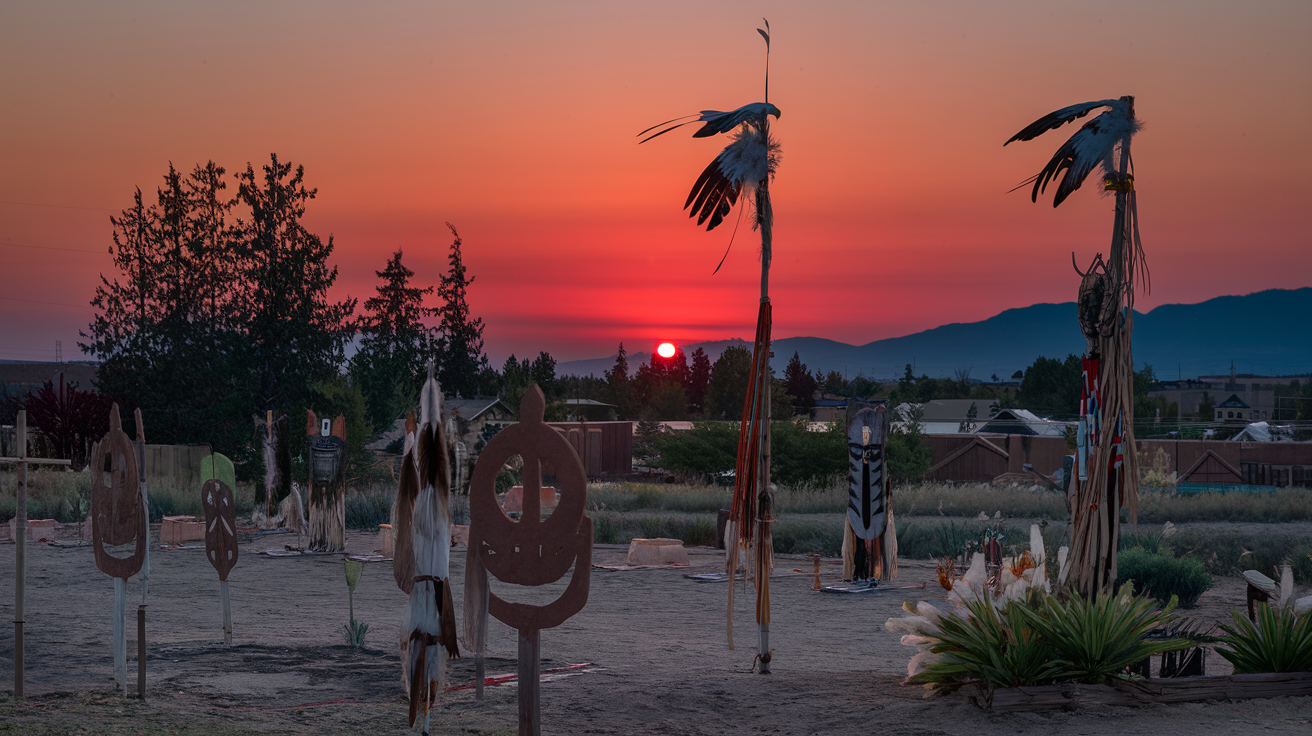
The appearance of red suns across Native traditions carries profound spiritual significance, serving as powerful omens, symbols of transformation, and markers of cosmic balance. From prophecies that interpret these celestial events as messages from ancestors to the spiritual practices they inspire, red suns represent a sacred connection between the physical and spiritual realms. Their prominence in Native art, storytelling, and cultural expressions demonstrates how deeply intertwined these celestial phenomena are with Indigenous worldviews.
Today’s Indigenous communities continue to honor these traditional perspectives while adapting their understanding of red suns to contemporary environmental contexts. By recognizing and respecting these interpretations, we gain not just a deeper appreciation of Native spirituality but also valuable insights into alternative ways of perceiving our relationship with the natural world. The next time you witness the sun glowing red on the horizon, consider the rich cultural tapestry of meaning this sight has held for Indigenous peoples across generations.






Join our affiliate program and start earning today—sign up now! https://shorturl.fm/j0iPv
Earn recurring commissions with each referral—enroll today! https://shorturl.fm/H38bA
Your audience, your profits—become an affiliate today! https://shorturl.fm/WFMXa
https://shorturl.fm/hSKN6
https://shorturl.fm/VEZSq
https://shorturl.fm/ksvsK
https://shorturl.fm/x9fgU
https://shorturl.fm/jE9gI
https://shorturl.fm/Z6sBR
https://shorturl.fm/KQ09D
https://shorturl.fm/QKWsO
https://shorturl.fm/Qi6ka